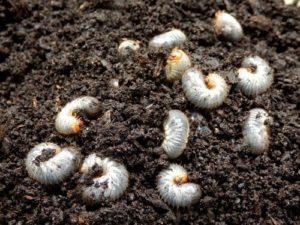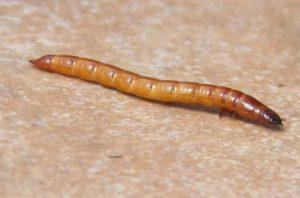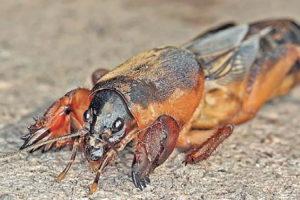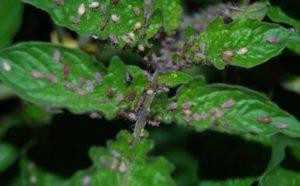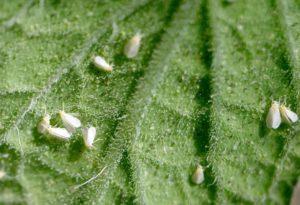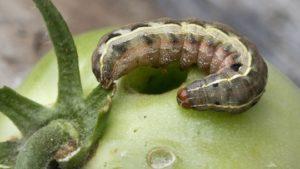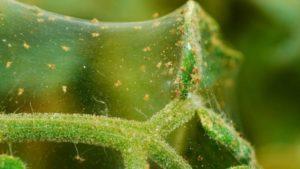Tomato pests: 8 bad insects that pretty much spoil the crop
Tomatoes can be attributed to the most common vegetables. However, the harvest of this crop can significantly reduce the invasion of pests. Insects actively feed on roots and stems, gradually weakening the plant.
Content
Pests in the soil or greenhouse
Some insects feed on the underground part of plants, i.e., the root system. Such pests include the May beetle, wireworm, bear, nematode. The above-ground part of the leaves, flowers, fruits is eaten by the scoop caterpillar, spider mite, Colorado beetle, aphid, whitefly.
Insects can be not only in the open field, but also in the greenhouse. There is an even more comfortable environment to spread quickly. If the soil is properly prepared, then parasites will not appear.
Who will gardeners face?
In a short review, some types of pests that gardeners will meet in the process of planting and growing garden crops.
May beetles
May beetles or cockchafers are presented in the form of worm-shaped larvae that have a white color, they are the ones that harm tomatoes. The head is light brown or orange. Front with three pairs of legs.
Pests are gluttonous. They gnaw on the roots, which leads to a slowdown in the development and growth of plants. A large population can destroy the entire seedling.
The life span of a thick voracious larva of the May beetle in the ground reaches 4 years. During this time, they eat a large number of plant roots.
The most effective mechanical treatment of the soil, which will allow you to select the larvae to destroy.
wireworm
So called wire worms or darts. These are the larvae of the click beetle. The larvae are bright yellow or orange. They eat not only the roots, but also the stalks of the tomato.
You can protect the landing with the help of prevention:
- Loosening.
- Weed removal.
- Enough fertilizer.
- Proper agricultural practices.
- Bazudin, Diazonin and Aktara.
Medvedki
Locust relatives. Thanks to the developed front paws, they dig the ground. They are brown or brown in color. Dangerous can be called both adults and larvae. They usually live in moist soil. They have a detrimental effect on seedlings.
Animals multiply rapidly and make their habitat deep in the roots, so conventional insecticidal treatments do not help.
It is necessary to use special preparations in granules that are laid in the ground.
Nematodes
Small worms contribute to the formation of swellings and growths on the leaves of the culture, destroy the roots. The affected culture practically does not develop and bears little fruit. Worms can appear both in greenhouses and in open ground.
Plants can only be protected from nematode worms in a comprehensive manner.
- Dig up infected bushes with a part of the soil.
- Spill places where there was infection with boiling water.
- Plant green manure and bring them into the soil.
- Use biological agents.
aphid
Small aphid parasites form a whole colony. They are dark green or black in color. Habitat - the underside of the leaves. In the greenhouse, ideal conditions for the reproduction of aphids, but they often flutter in the beds.
Prevention is the attraction of birds and ladybugs. With a small number of insects, they are washed off with a stream of water.
On a large scale, you need to start fight against aphids and ants chemical agents.
Whitewoods
The size of a small insect is from 1 to 2,5 mm. The body is yellow, you need to look for them from the inside of the sheet. A soot fungus is formed similar to black plaque. The tomatoes are starting to dry out.
Insects reproduce very quickly, laying many eggs. They are more often found in a greenhouse, which provokes additional diseases. You can get rid of it with adhesive tape, homemade traps or chemicals, with a strong infection.
Scoops
Caterpillars ranging in size from 3 to 4 cm. Coloring can be black, brown, gray. They feed on leaves, stems, petioles. Mostly eating takes place at night. The caterpillar can even penetrate the fruit.
They breed quickly and eat a lot. There are species that feed mainly on fruits, gnaw on roots, or those that feed on leaves. Apply for protection folk methods, chemicals and biological methods of protection.
spider mites
Small parasites create a thin web and suck out juices. Small dots appear on the leaves, which disappear after a while. Rare watering or poor ventilation create a favorable environment for settling in greenhouses.
It is very difficult to fight a pest, it is easier to apply prevention:
- disinfect the soil;
- inspect seedlings;
- remove plant residues;
- water properly;
- feed in time.
Colorado beetles
Leaves are destroyed very quickly. The place of laying eggs by females is the underside of the leaves. Initially, the eggs are yellow, then turn red. The hatched larvae are very voracious and adapt perfectly to any environment. The adult is large, hibernates in the soil and eats a lot.
Landings can be protected in several ways: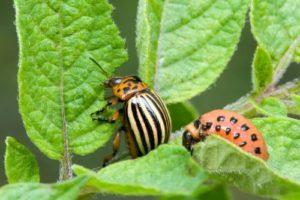
- mechanical collection;
- spraying folk methods;
- special insecticides;
- attracting biological enemies.
preventive measures
Fighting parasites is quite difficult, especially if you start the situation. Their population is growing every day. Pests are capable of rapid recovery, some are very tenacious.
Some tips for preventing insects:
- observe the temperature regime and optimal humidity;
- apply fertilizers in accordance with agricultural standards;
- enrich the soil with organic matter;
- loosen the soil;
- destroy weeds in a timely manner;
- observe crop rotation;
- make a joint landing.
Methods of struggle
In pest control, a number of integrated measures must be used. They relate to open ground and greenhouses. Although each type of pest has its own characteristics, there are a few general rules:
- moderately water the plants and ventilate the greenhouse;
- mulch the soil, observe the neighborhood;
- collect manually caterpillars and adult beetles;
- treat with Metarizin, Boverin, Entocide, Aktofit;
- disinfect greenhouses before planting, remove the upper part of the soil;
- artificially colonize the soil fungus;
- spray tomatoes in dry warm weather;
- put a couple of frogs in a greenhouse;
- lure lizards, starlings, hedgehogs to sites.
Conclusion
For a full-fledged harvest, it is necessary to monitor the culture. When the first pests appear on tomatoes, the necessary measures for destruction are taken. However, prevention will help prevent the invasion of unwanted neighbors.
Previous
